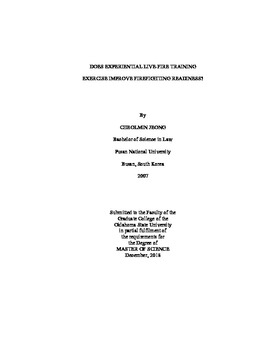| dc.description.abstract | Firefighting is a demanding profession in South Korea requiring physiological strength, psychological soundness, skill, knowledge, and teamwork from firefighters. To raise and keep the qualified firefighter, fire service academies in the country have been providing them with from traditional skill mastering classes to recently introduced live-fire training (LFT), which simulates real fires. Since a couple of fire training institutes have installed the LFT facilities and been holding a few LFT classes, the in-depth effect of the training is still unknown. In order to better understand the effect of LFT and suggest effective training scenarios, this study implemented a quasi-experimental LFT with the help of 518 study participants from two recruit firefighter classes of a fire academy in South Korea. The academy utilized four LFT facilities: the Residential, the Industrial, the Special Phenomena, and the Self-Confined Breathing Apparatus (SCBA), which imitate specific fire types in each field. The participants answered to the training effect questionnaire before and after their LFT. With their answers, this study tested the significance of the participants' improvement and measured the effect size of the LFT based on Cohen's index (d) and Omega Squared (ω2). The result shows that study participants' perception of their readiness of firefighting has improved after the LFT. In addition, the effects sizes of the training for the job requirements were mostly consistent across the LFT facilities. Specifically, their perception of knowledge acquirement about firefighting techniques has the biggest improvement whereas their perception of teamwork for safety has the smallest improvement. In addition, they have improved higher in psychology dimension than in physiology. The data shows inconsistent improvement in skill across the LFT facilities. Furthermore, some demographic factors such as sex, job position, and education level made difference in the perceptive readiness of firefighting between participant's categories. These findings will assist the Korean fire authorities to develop customized LFT secessions for trainees and to design effective training at each LFT facility. | |
